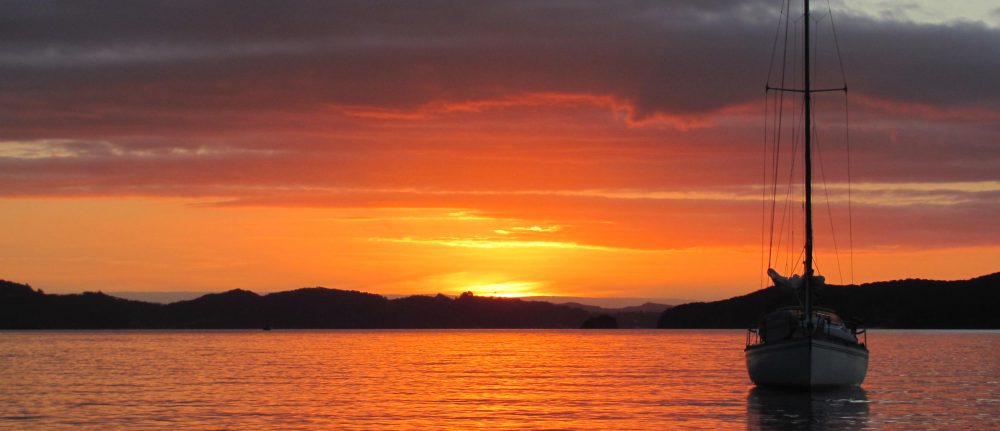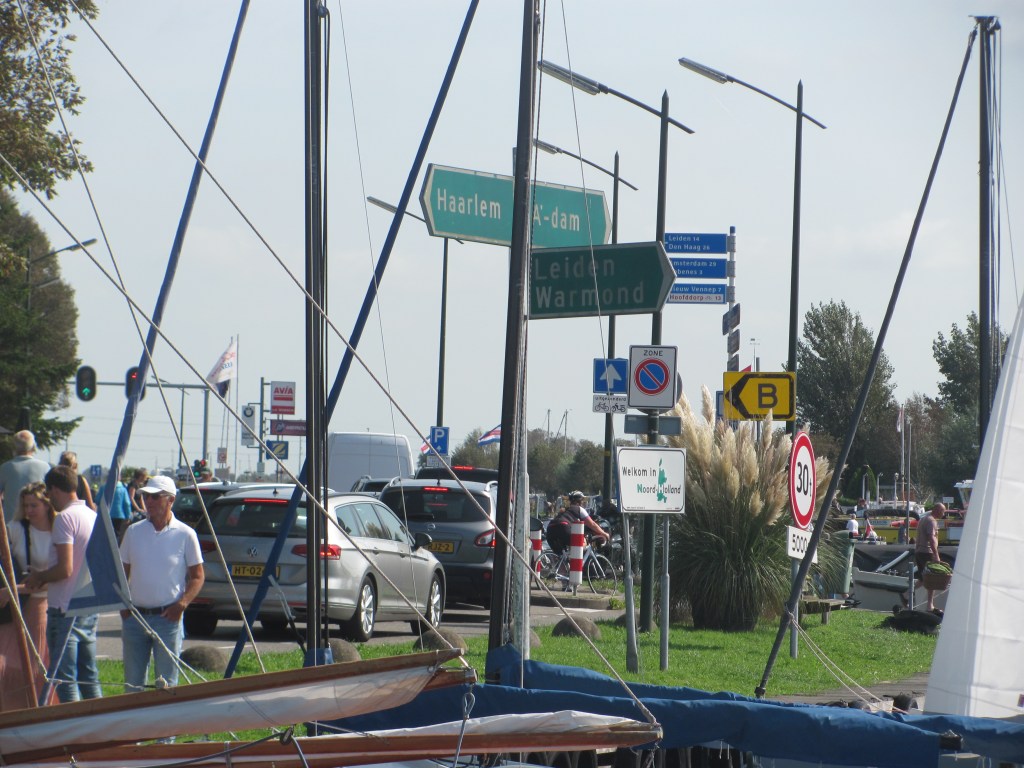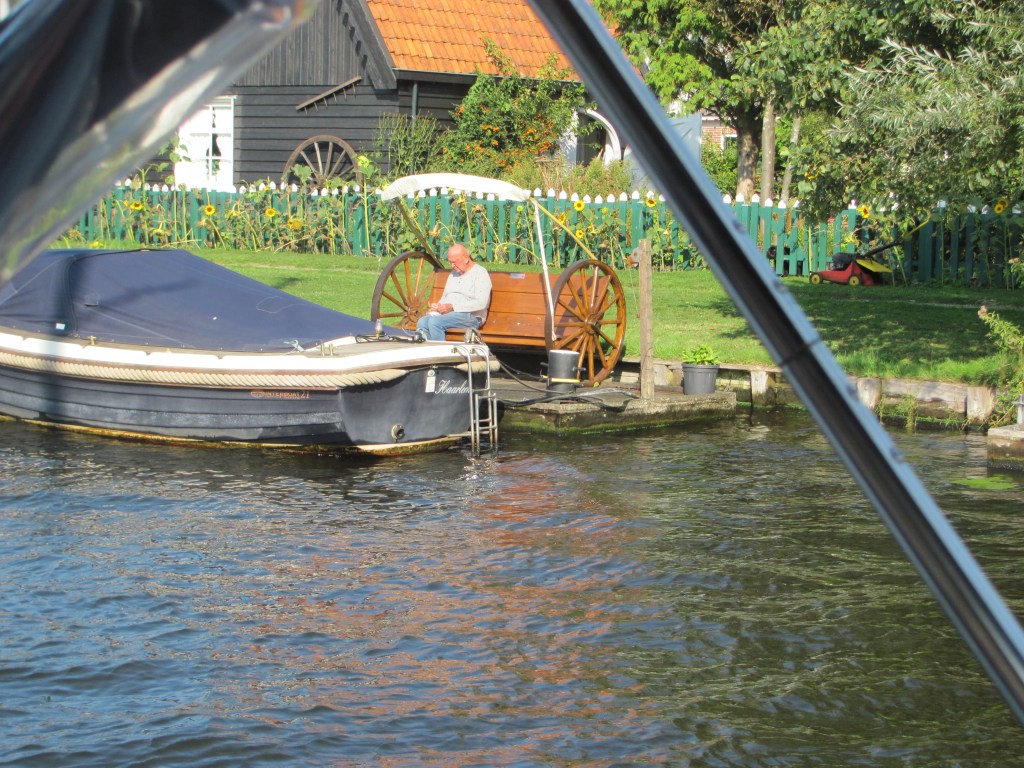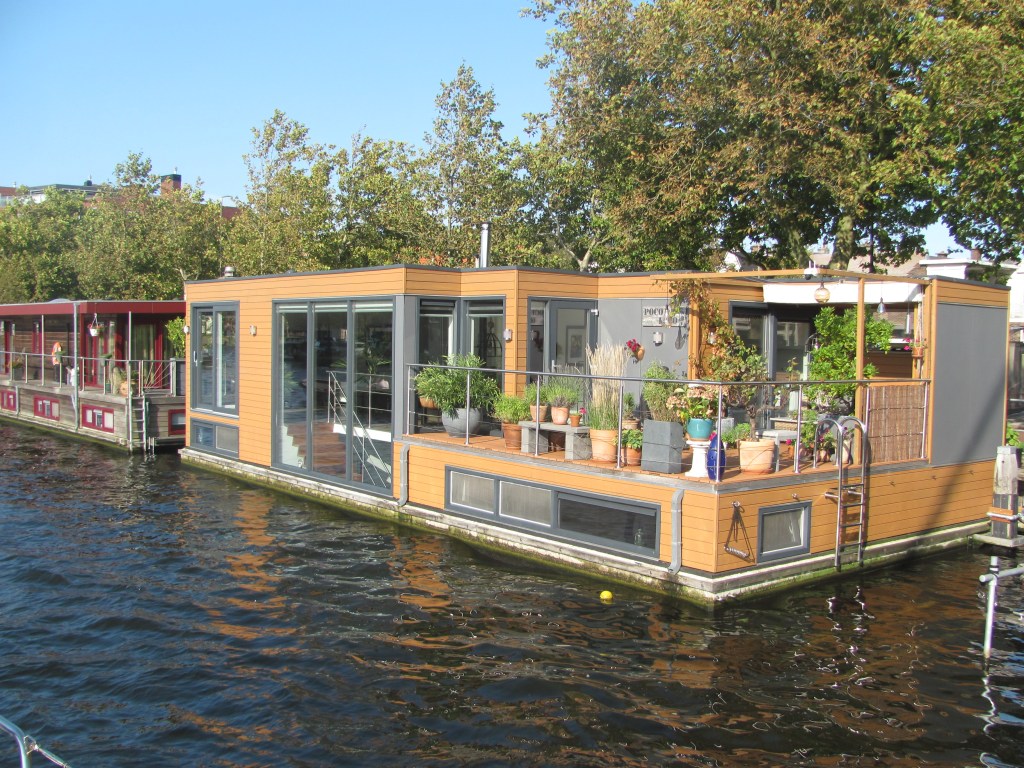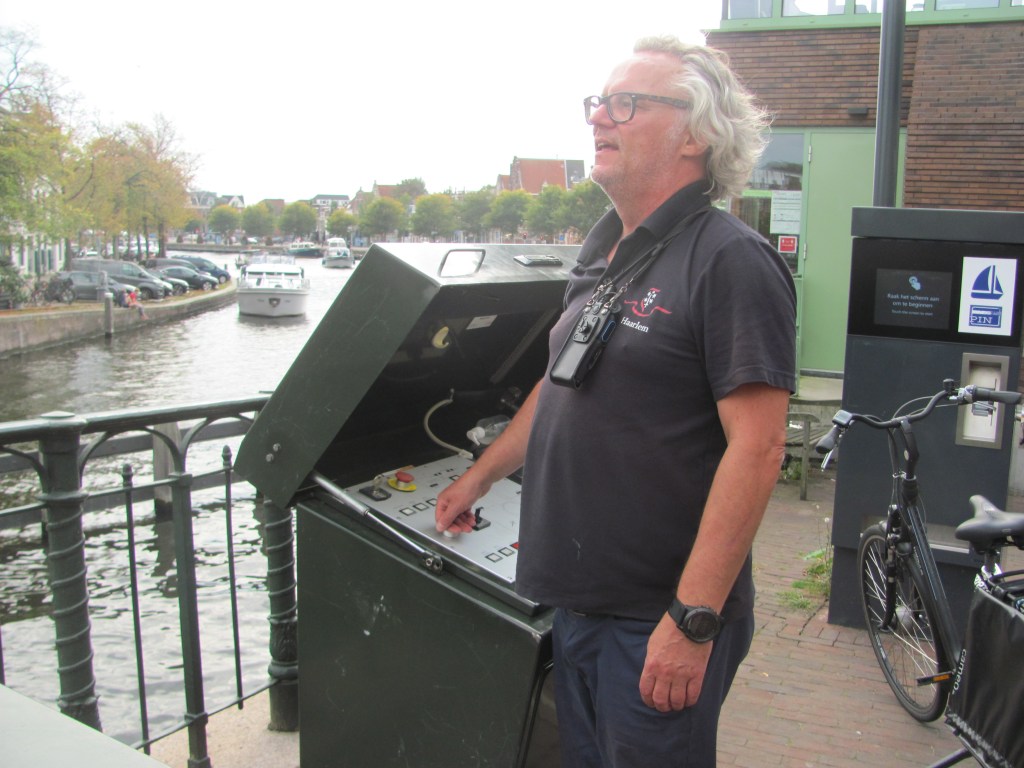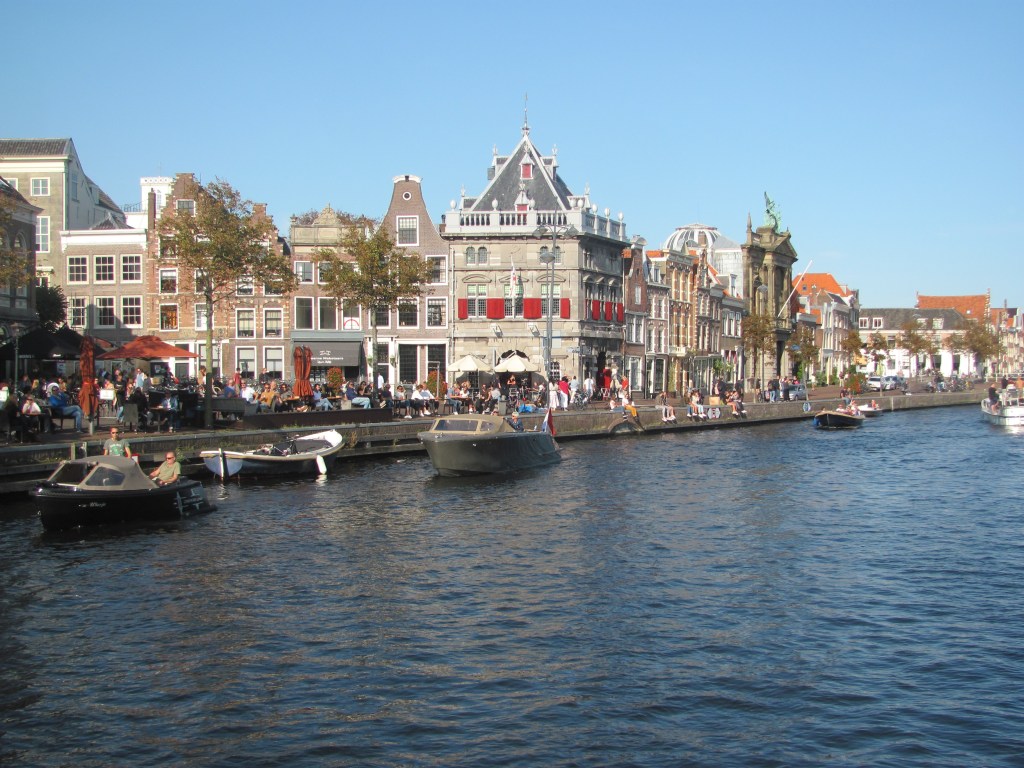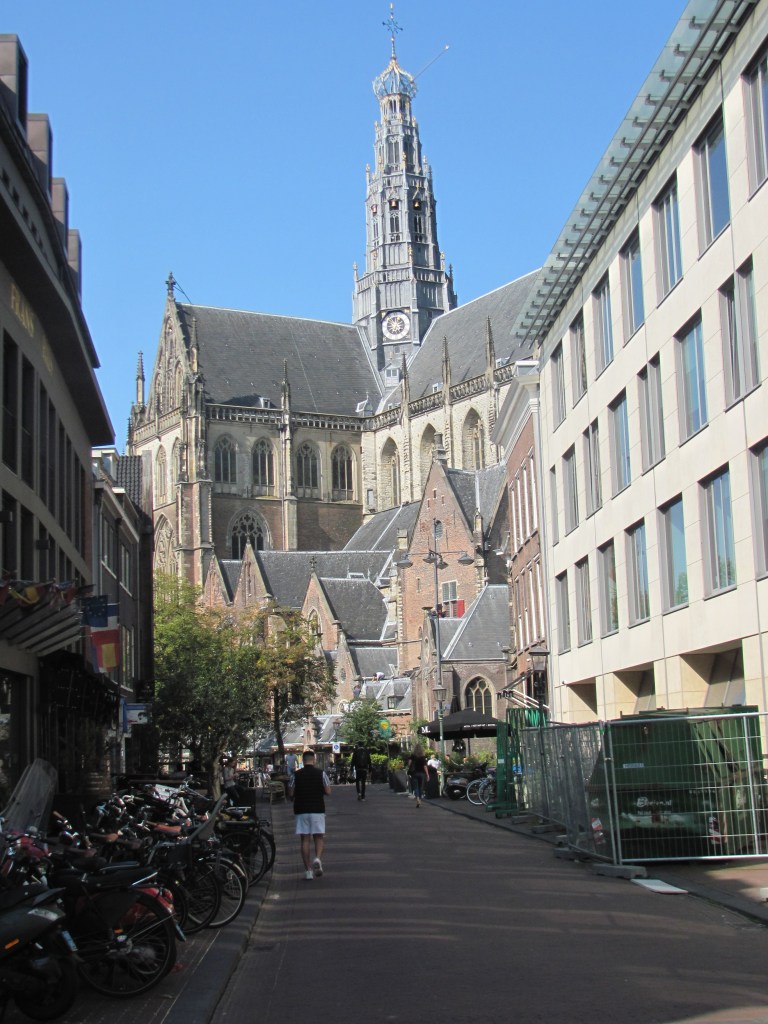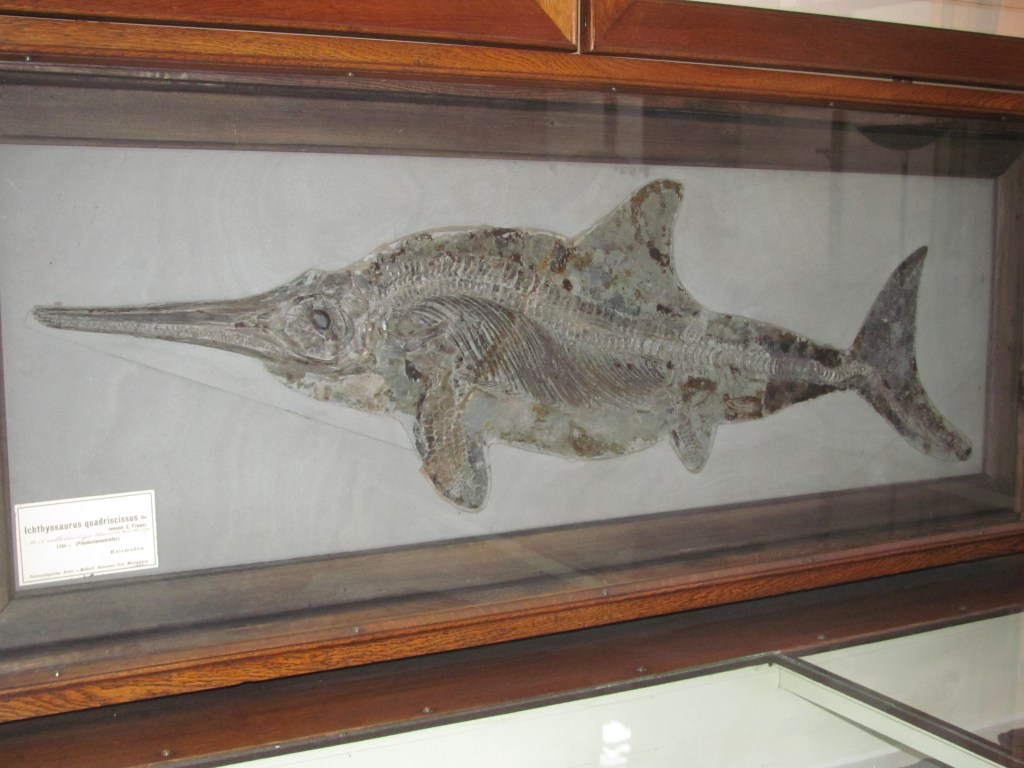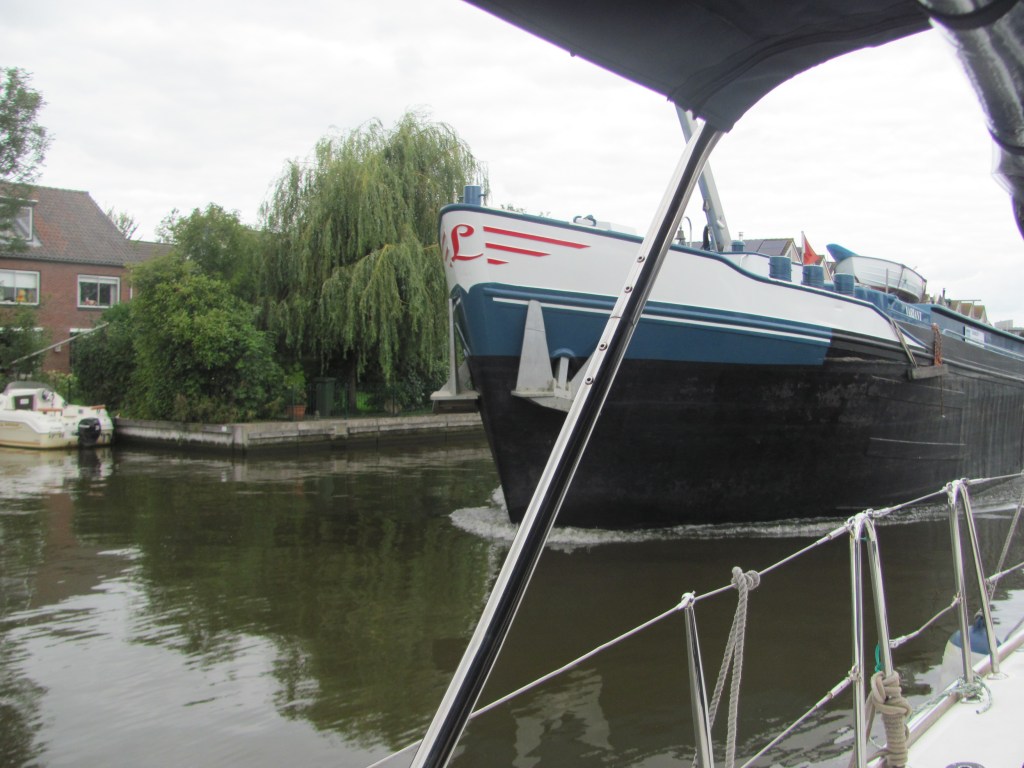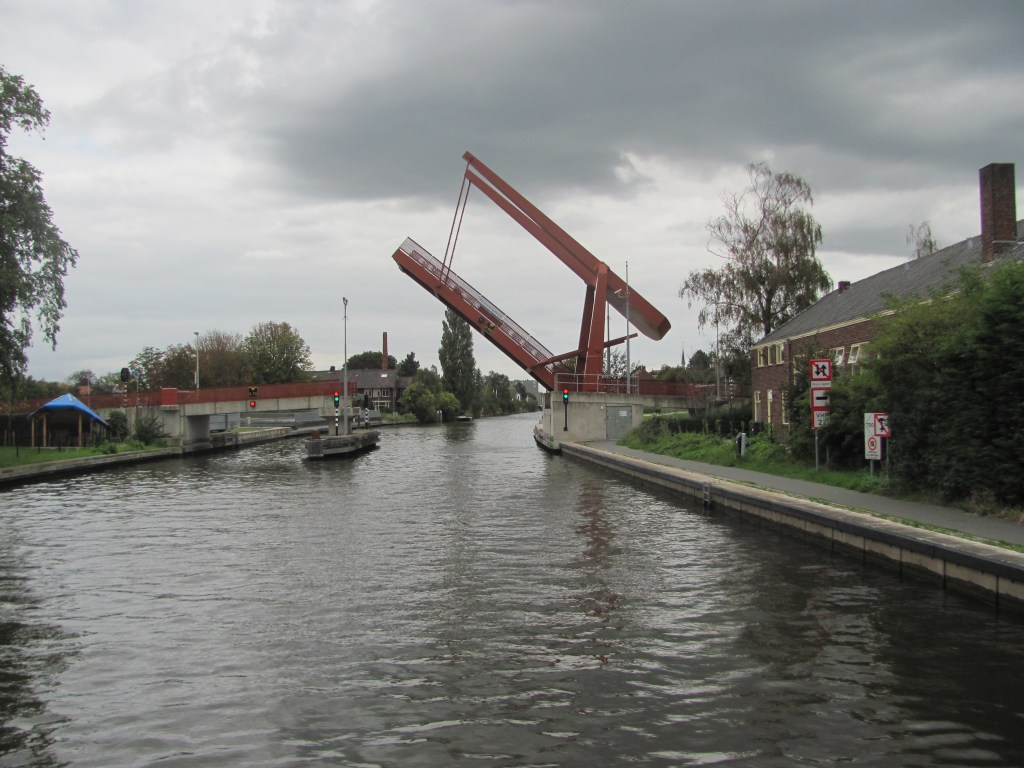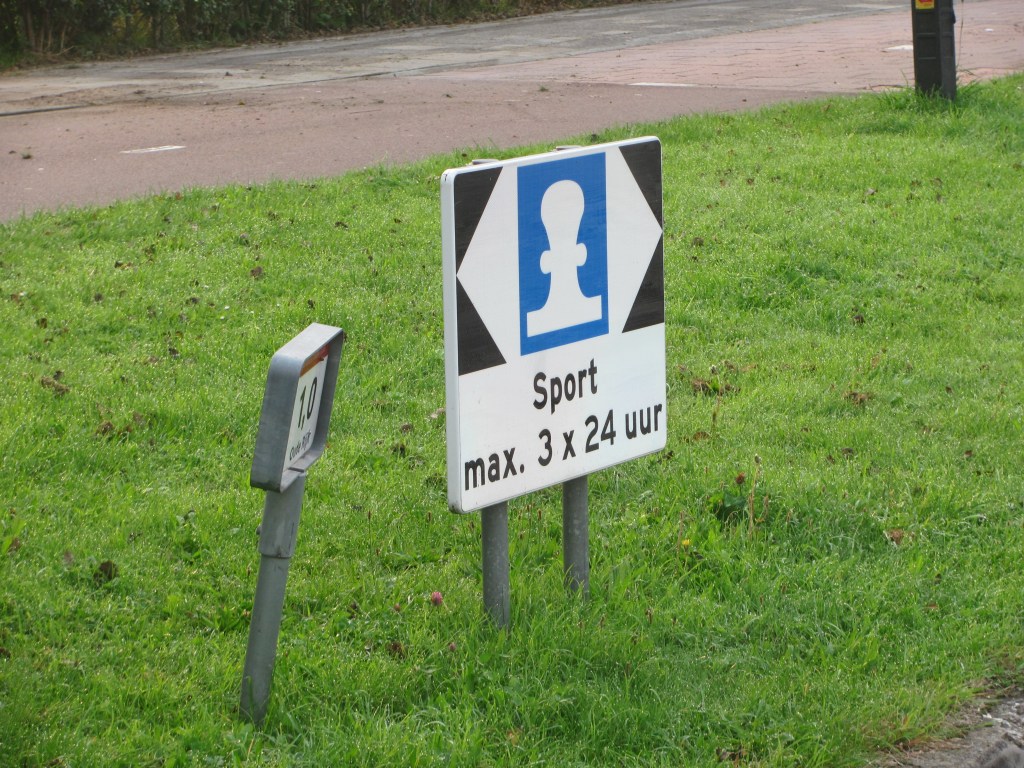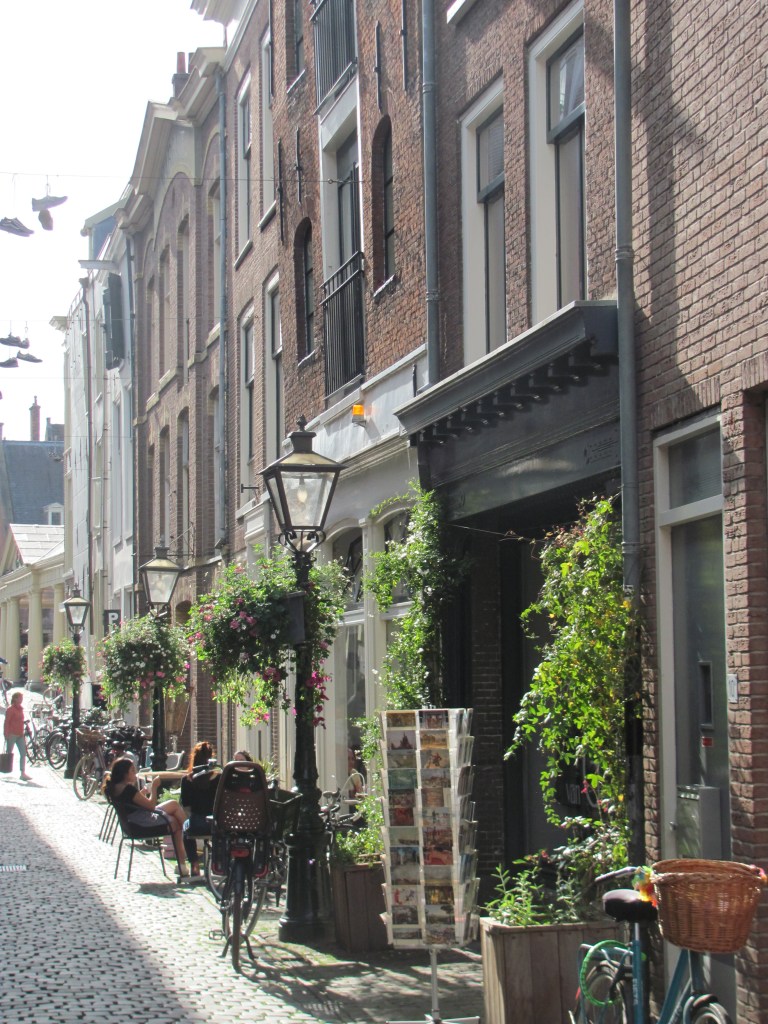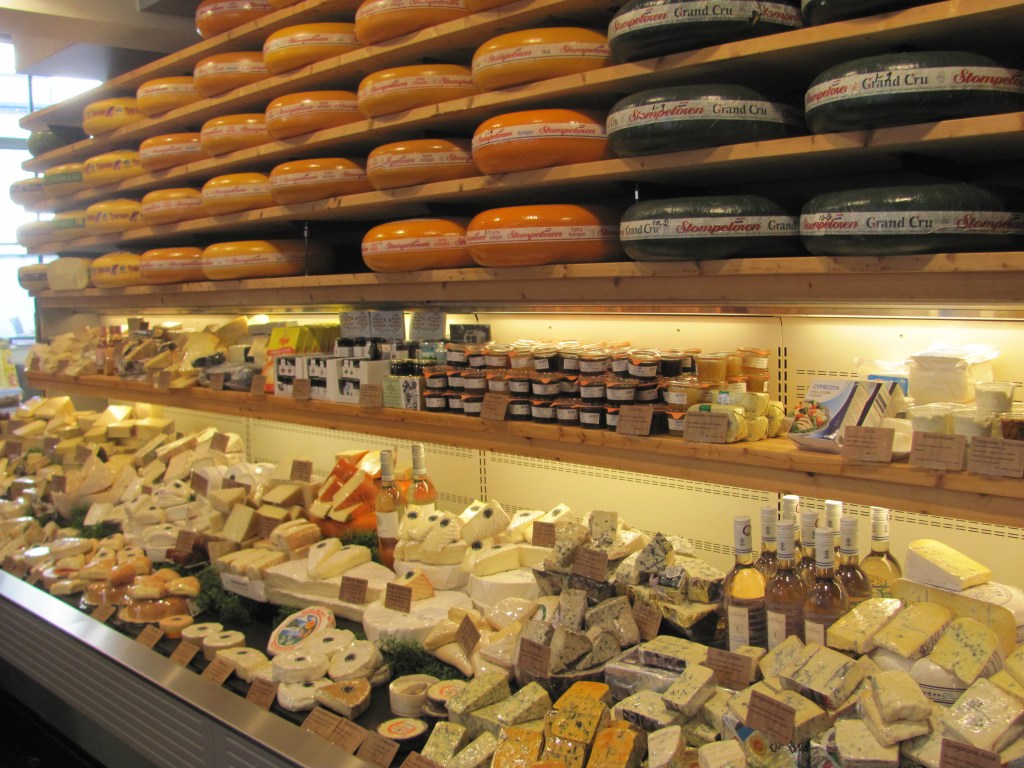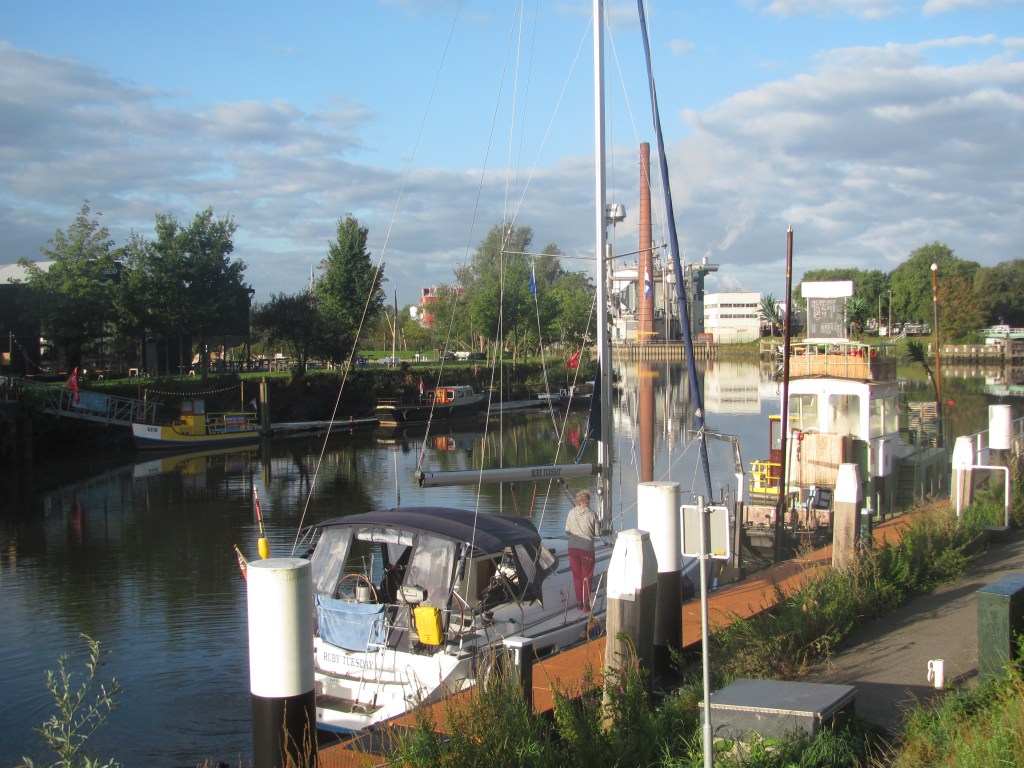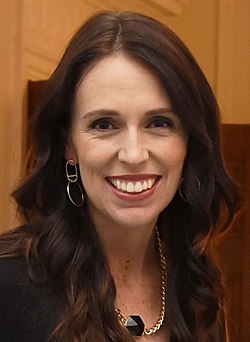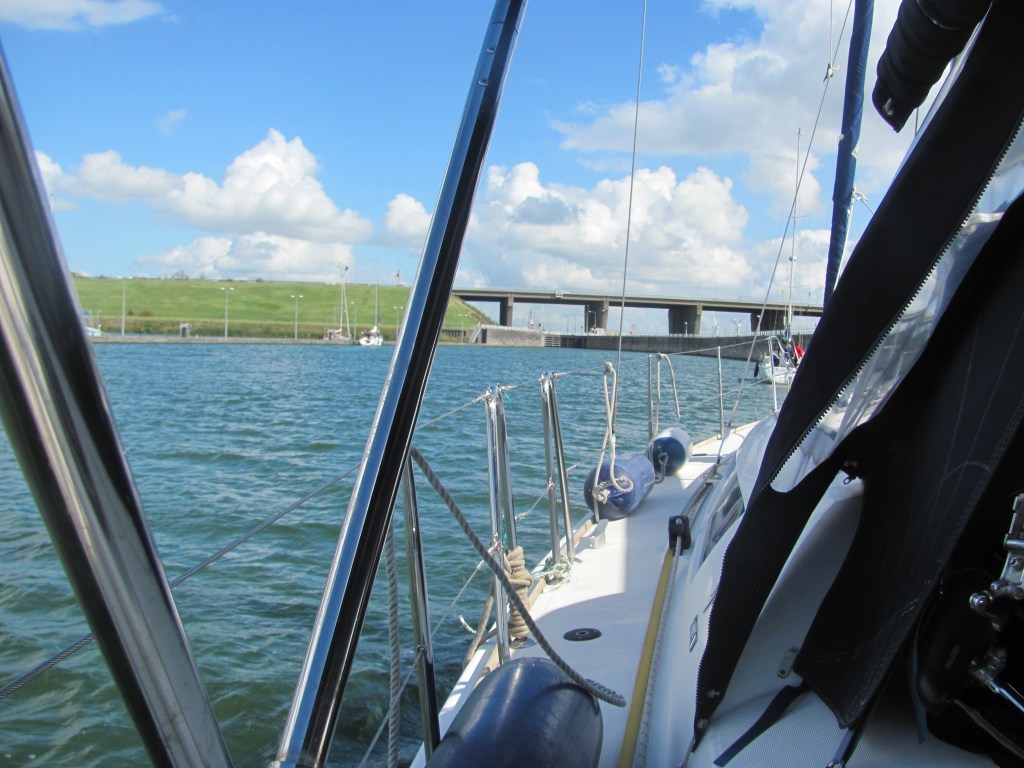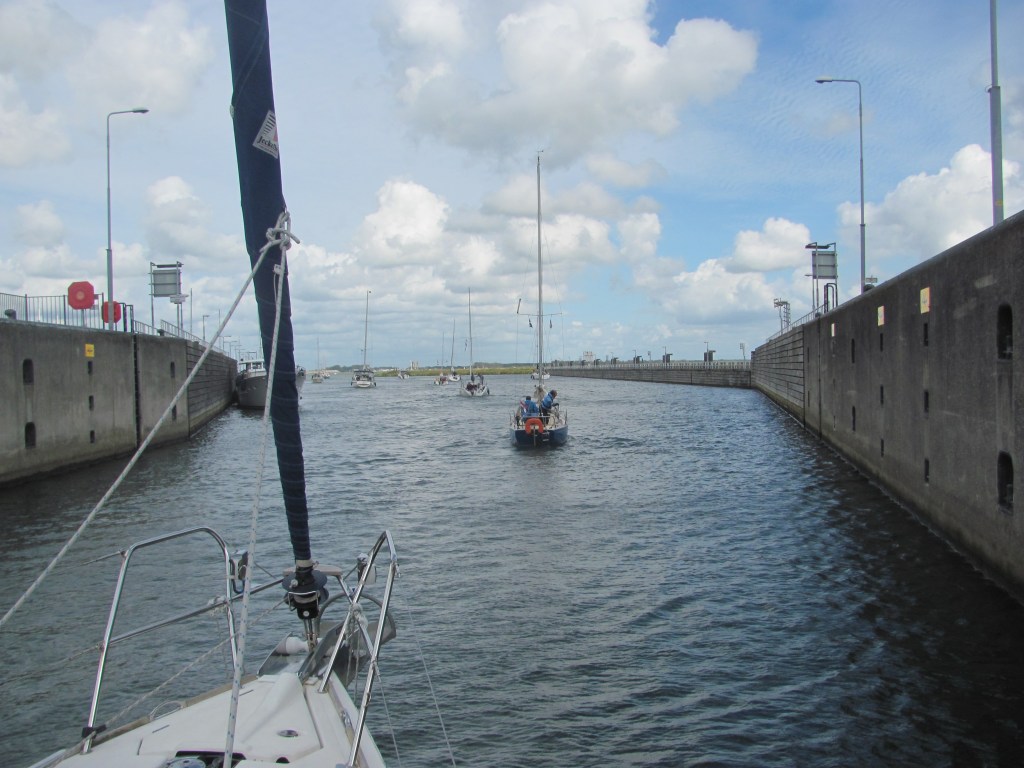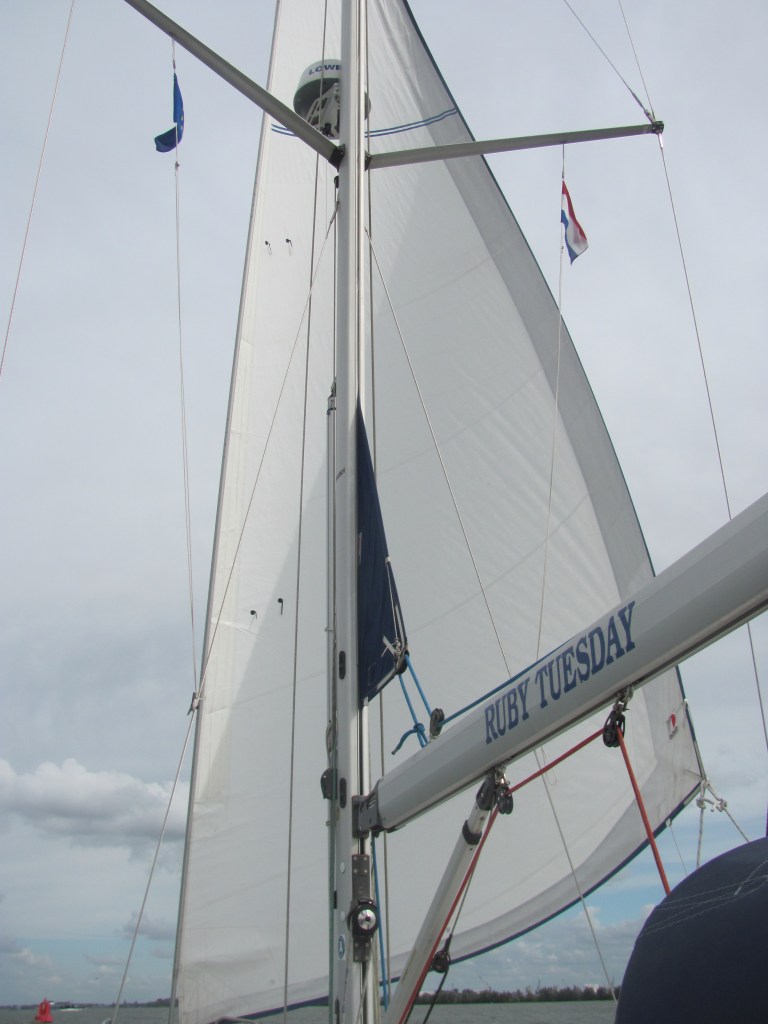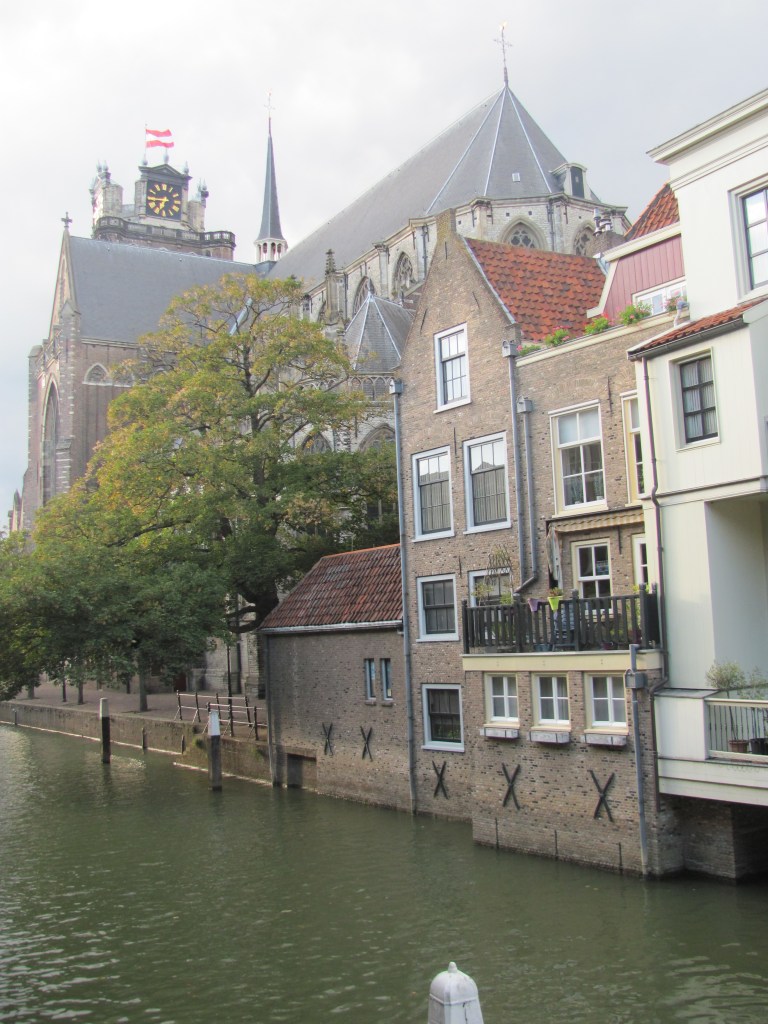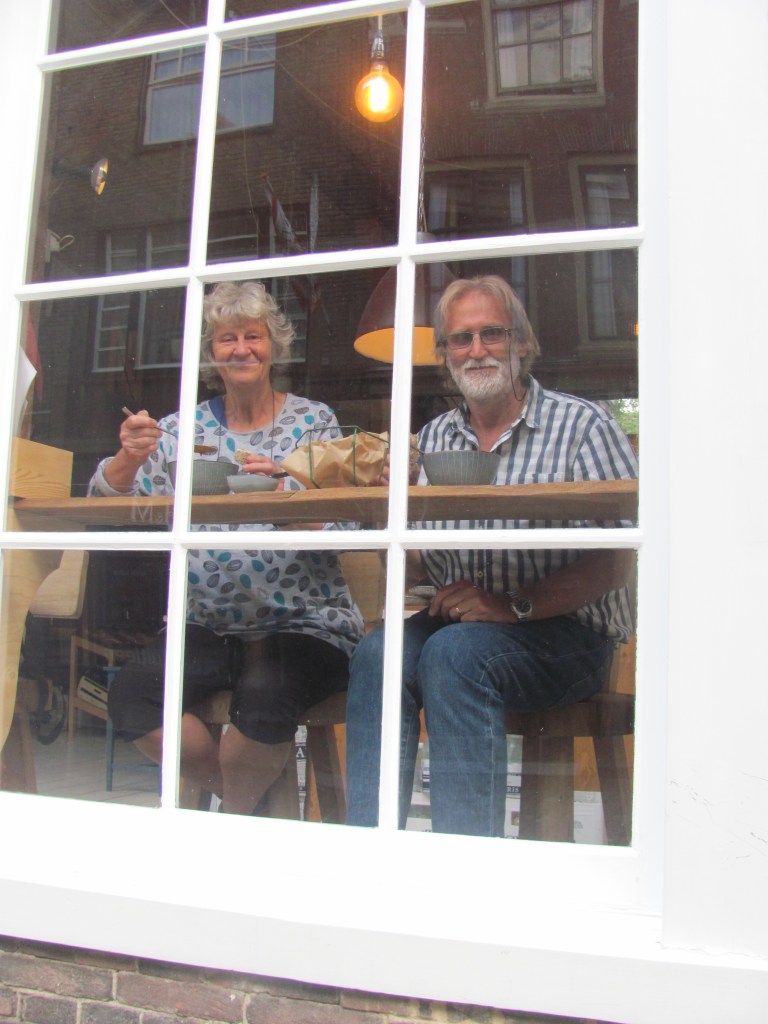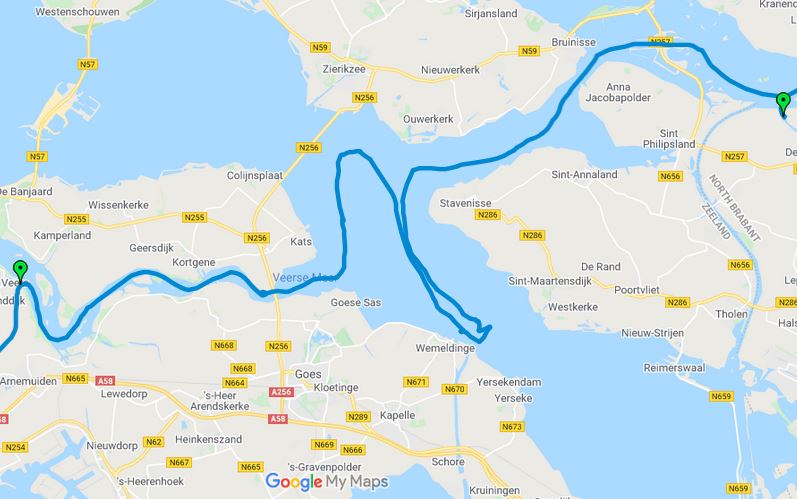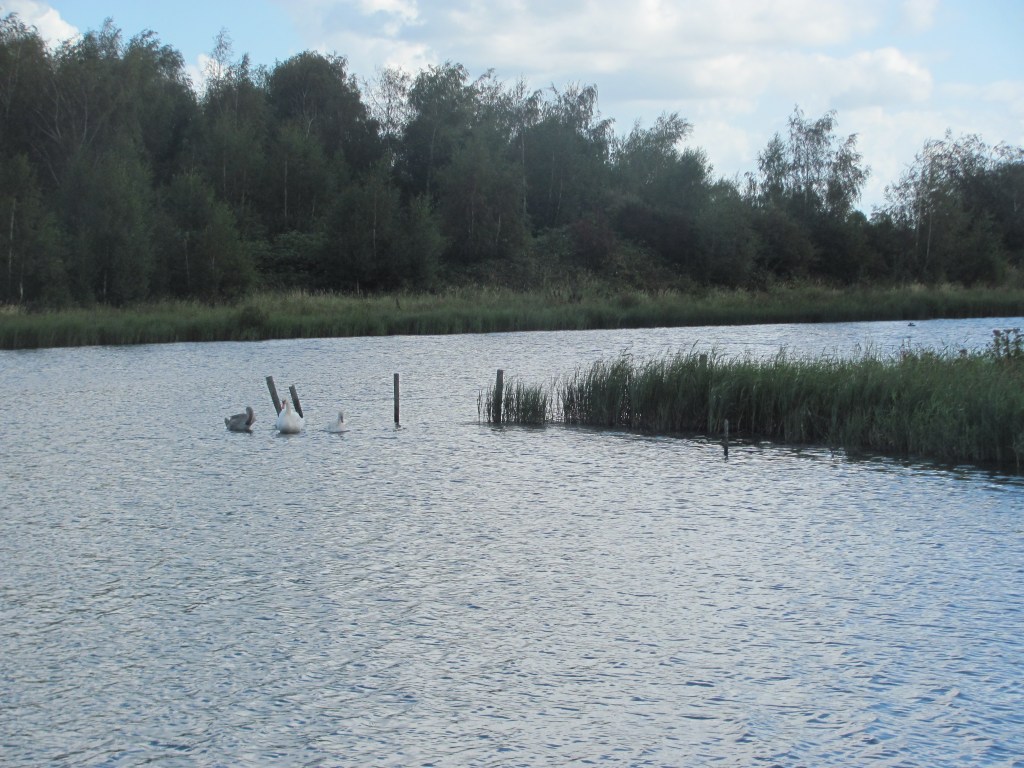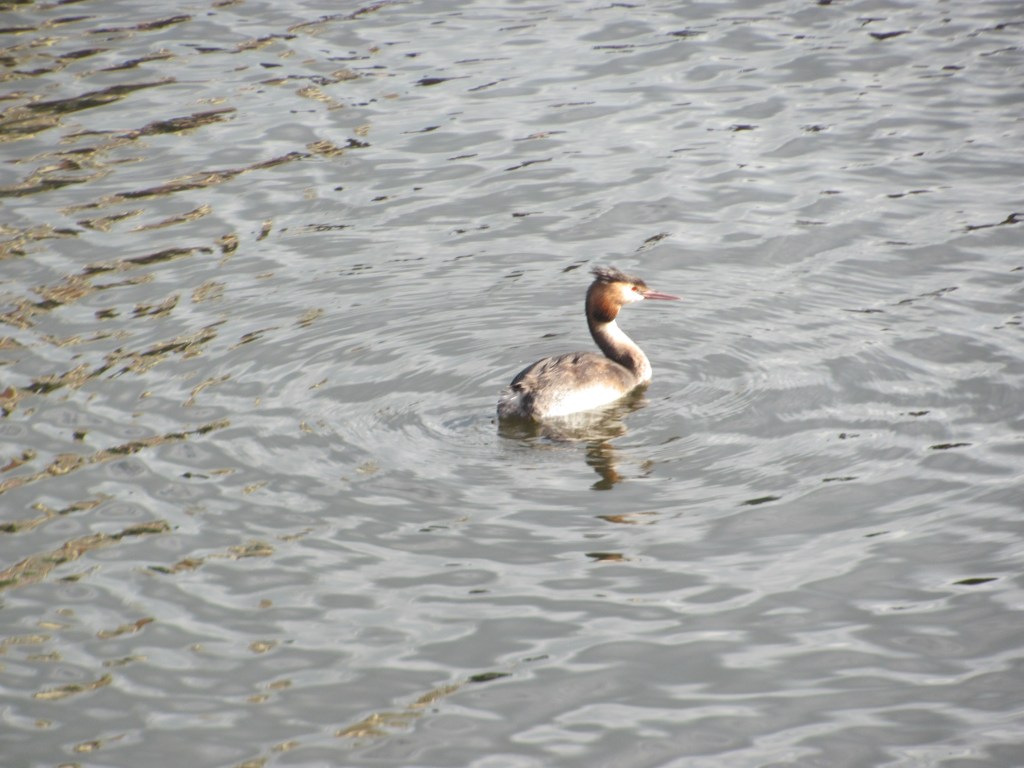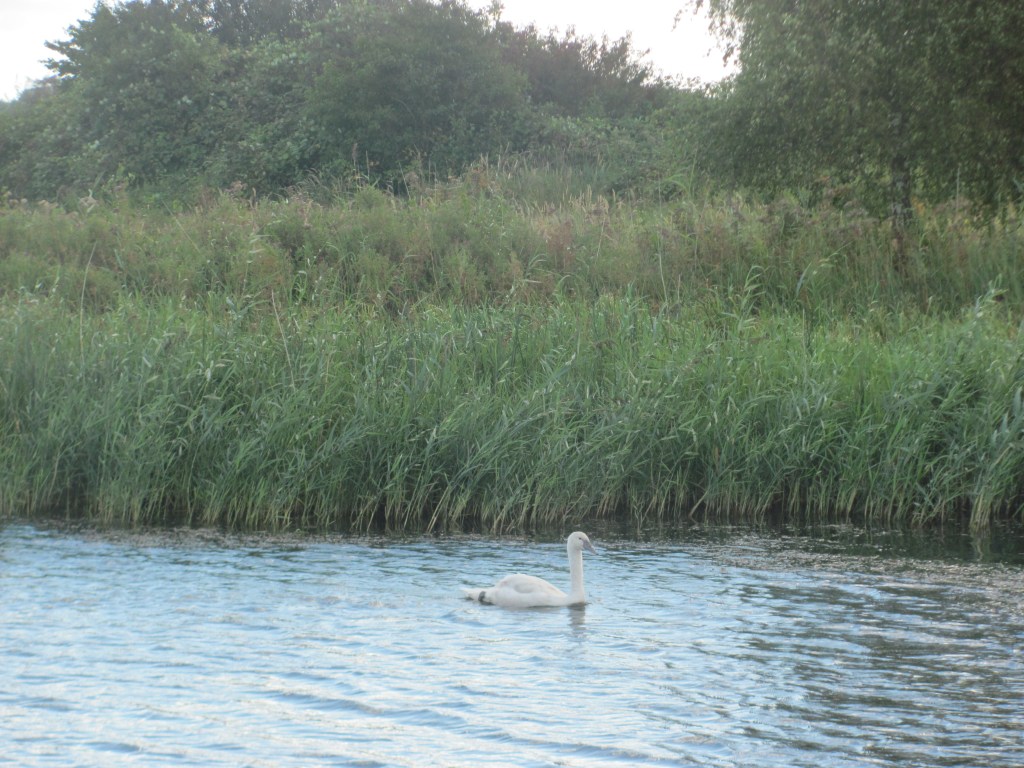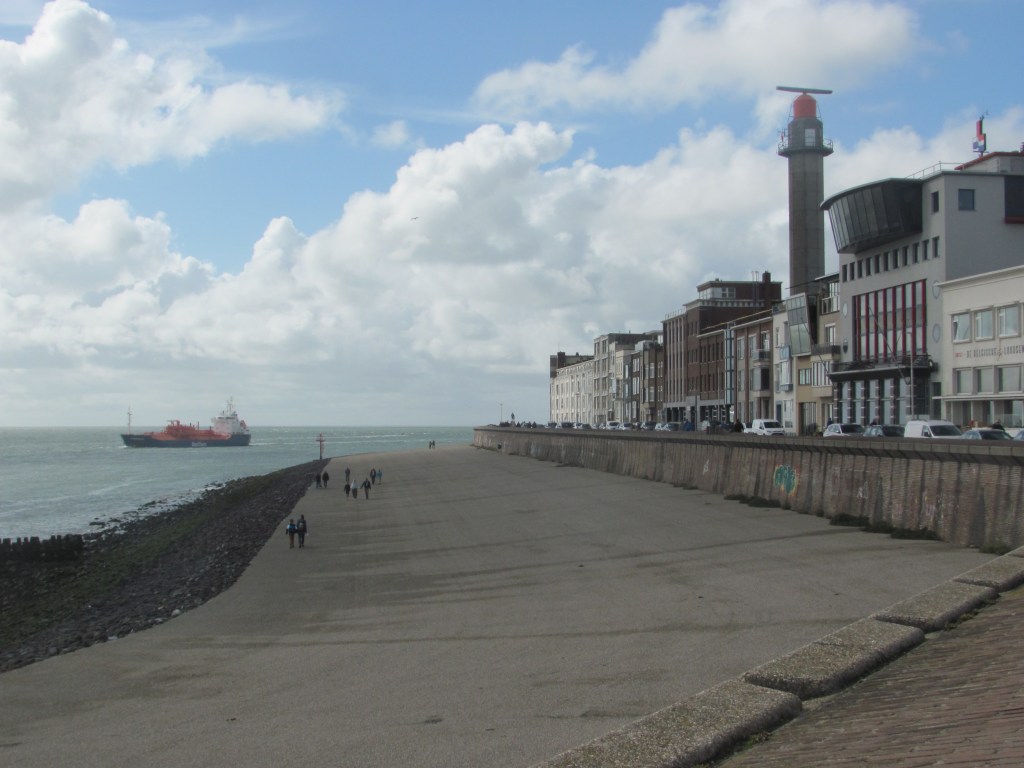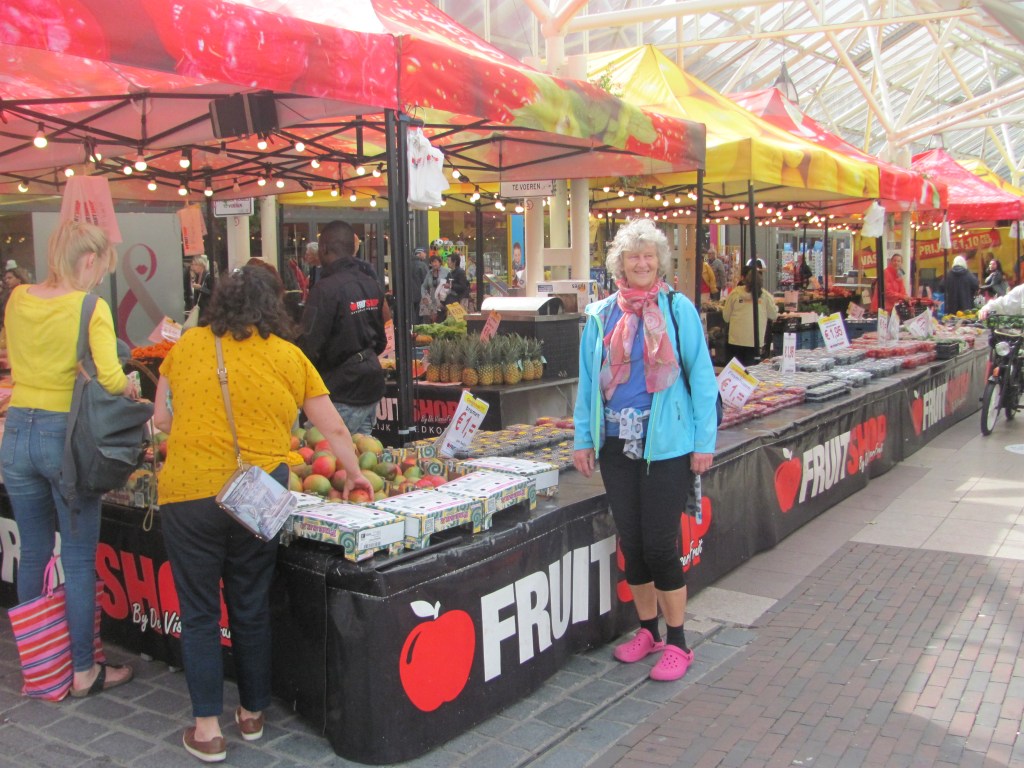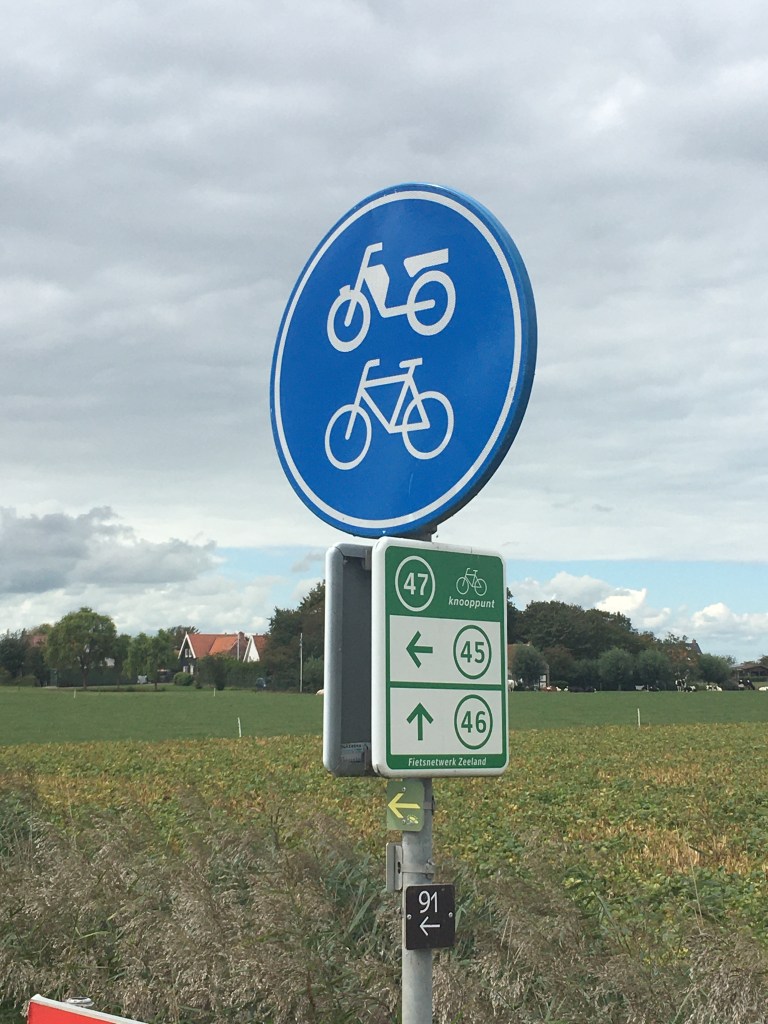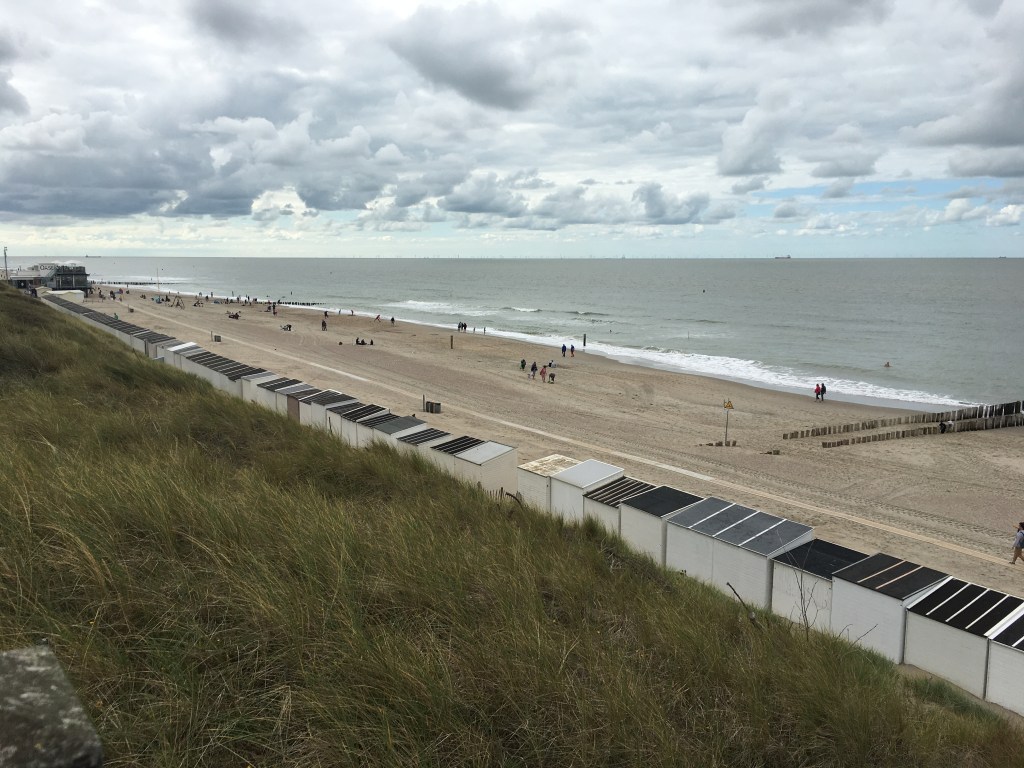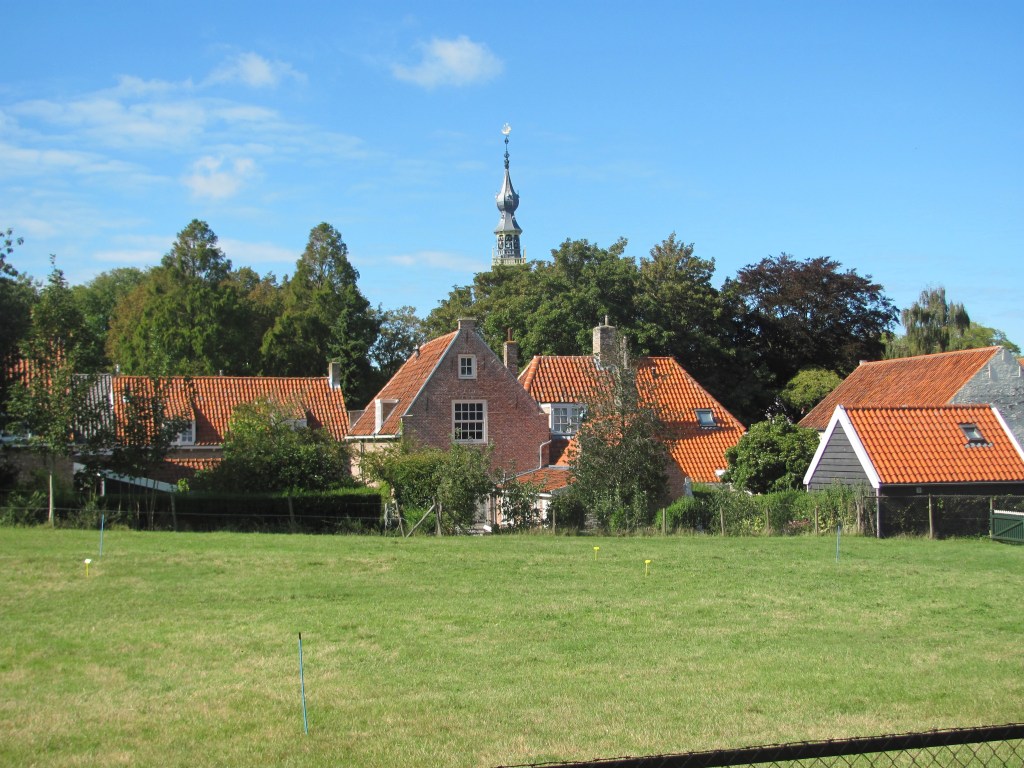I am awoken suddenly in the middle of the night, and lie listening, holding my breath. Something is moving outside. My heart begins to beat faster – do we have a burglar? We are tied up right next to the river bank, and it wouldn’t be difficult for someone to creep on board if they were determined enough. The moon is bright, so I peer out of the little side window into the cockpit, but there is nothing. Did I dream it?
I settle back and am just about to drop off, when I hear the sound again –this time it is distinctly the soft pad of footsteps in the main cabin. Someone is definitely there. I get up quietly and grab the trekking pole on top of the cupboard. It has a sharp end that could do someone a bit of damage if need be.
I throw open the cabin door. There is a fierce screech and a scrabbling of feet on the floor, and something furry shoots between my legs and up the companionway stairs. More skithering on the deck as it changes direction and goes under the cockpit tent, and it disappears into the night. Then quiet again.
It’s a black cat. I had seen it loitering around on the road the day before, obviously casing the joint. There is no food lying about, and no damage to the upholstery, so no harm done. I put down the trekking pole and climb back into bed. The First Mate sleeps on, oblivious to the unfolding drama.
Dawn arrives. We have to be at the railway bridge for the lifting at 0935, but before then we have to pass through the CatherijneBrug just up from us, scheduled to open at 0900. There should be enough time, but we decide to slip the lines early and are waiting five minutes beforehand. At 0900, nothing happens. Worried that we might not make it to the railway bridge, I decide to give it ten minutes, and then call the harbourmaster.
“We are just waiting for a barge further down the river to reach you”, she says. “Don’t worry. We’ll make sure you get there in time.”
The feeling that someone else is taking responsibility for us getting through the bridges somehow takes a load of our minds and we relax. Sure enough, we are joined shortly by a large barge and a small motorboat from the south to form a convoy.

The CatherijneBrug opens at around 0920 are we are on our way. The bridge control people are as good as their word. The road and rail bridges open together just as we get to them, and close after us.
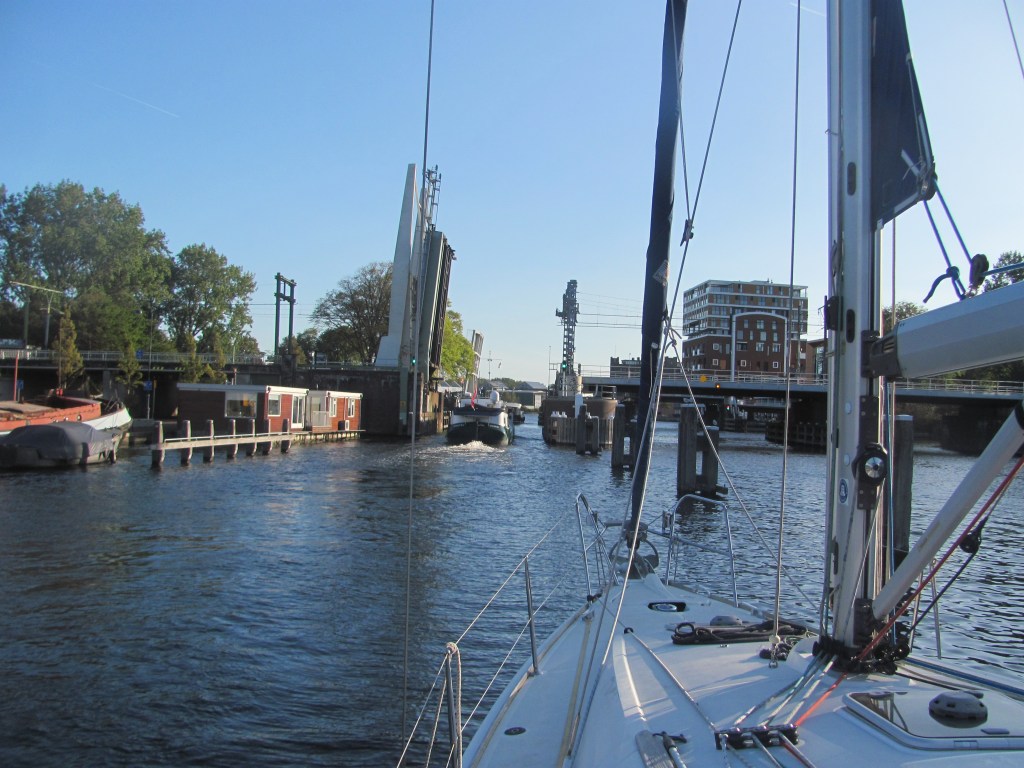
We pass through the industrial area. One of the warehouses is called the Idea Factory. It looks a bit derelict.
“They must have run out of ideas”, says the First Mate.

Before long, we arrive at the Grote Sluis at Spaarndam which separates the salt water of the Noordzeekanaal from the freshwater of the River Spaarne. We enter the lock and are just about to tie up on the starboard side where there is space, when there is a frantic waving from the lock-keeper running down from his control centre.

“I think he wants us to go on the other side”, says the First Mate.
There isn’t a lot of space on that side, but somehow we squeeze in with the willing help of some of the sailors already there. Minutes later, the barge arrives and ties up where we were. Only a couple of metres separate us.

We have to pay €3.50 to pass through the lock, so the First Mate runs up and over to the office on the other side while I hold on to the lines as best I can, making sure they can run freely. We don’t particularly fancy a rerun of the Gouda experience!
The lock fills up, the bridge lifts, the gates open, and we are on our way again. Only the A9 motorway bridge and another small one to go now. We arrive just in time for them to open in quick succession, and then we are through. We can relax now. No more bridges or locks until we are on the other side of Amsterdam.

We turn right into the Noordzeekanaal, heading southeast. The wind is also from the southeast, directly on our nose, so we have to motor. It’s cold, so we put on our fleeces. Barges are coming and going in each direction, so we keep as close as we can to the starboard side, following the other yachts in front.


My mind goes back to our visit to the Teyler Museum yesterday. I have always been fascinated by the Enlightenment, a time when science and reason came to the fore, allowing humankind to escape from superstition, tradition and dogma. Over the winter, I had read Steven Pinker’s book ‘Enlightenment Now’ in which he waxes lyrical on the benefits that have come to humanity from the Enlightenment and the values it promoted of freedom and equality. Using lots of data, he shows that such things as life expectancy, health, wealth, inequality, the environment, peace, the quality of life, and happiness, to name a few, have all improved markedly over the last 200 years or so. All this has come from a huge increase in human understanding of the way the world works, and from using this knowledge to develop technology to improve the human condition. He may have cherry-picked some of the data, and there is still a long way to go before we have solved all problems, but there can be no denying that there has been tremendous progress.
“Oi”, says a voice from down on the floor somewhere. “Mind where you put your big feet. You almost stood on me!”
It is Spencer. For the first time he has ventured out from his canopy frame.
“Sorry”, I say. “I didn’t see you down there. I was just musing on the Enlightenment after our museum visit yesterday.”

“Ah, yes, I read about the Enlightenment”, he says. “A marvellous human achievement. I just wish that spiderdom could also come up with something similar. We are still steeped in superstition and traditionalism. That’s why I needed to escape. But human enlightenment is under threat, you know.”
“What do you mean?”, I ask.
“Well, in the last 10-20 years or so, there has been a shift in people’s thinking against reason and science, back towards the old tribal ways of thinking that I thought humans had outgrown. It’s all about identity with a group, or a country, led by an authoritarian strongman. Many think that Enlightenment values and liberalism have led to a weakening of the moral fibre of the country, and that these need to be reinvigorated. The strongman’s role is to lead his people back to the Golden Age that they think they once had. Everything he says is believed to be true, even though it can often be shown not to be. Loyalty to him is more important than whether he speaks the truth or not. This leads to the undermining of institutions that have taken years to build up to ensure that society functions efficiently and fairly, and to the rise of intolerance as the strongman tries to consolidate his power.”
A huge barge carrying a load of sand overtakes us on the port side. Its gunwales are so low it looks as if even the smallest waves might wash over them.
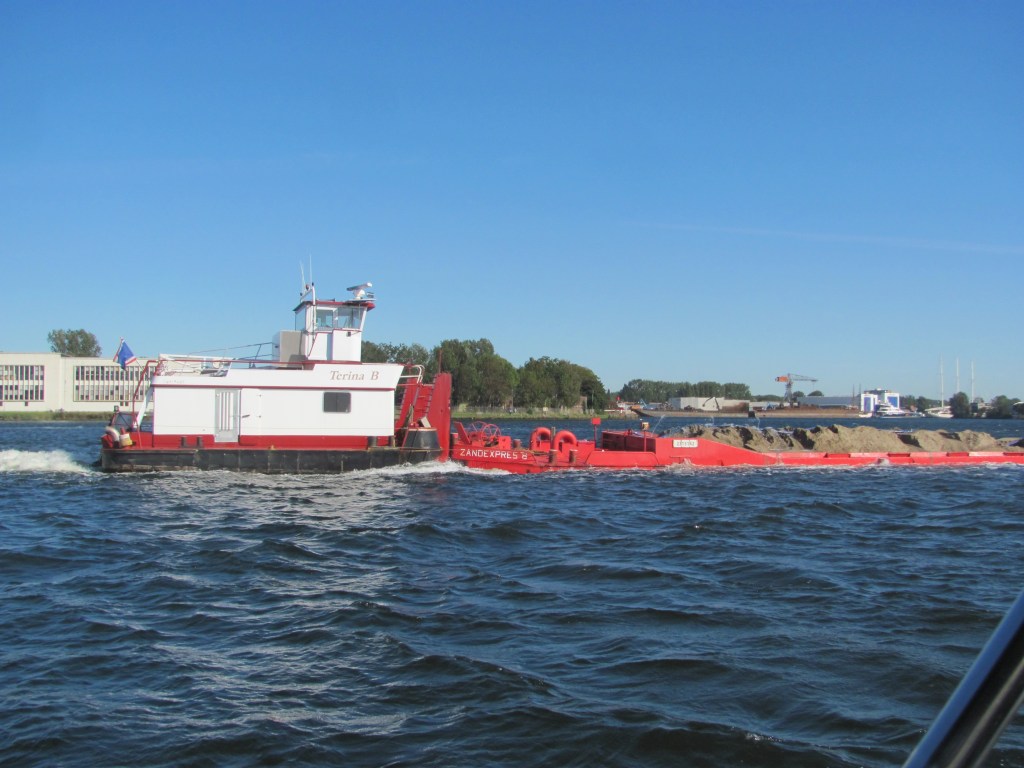
“Perhaps society needs strong leaders?”, I say, still amazed at how much Spencer has been picking up from the web.
“Strong leaders, but not strongmen”, he answers. “The sad thing is that humans have been down this road before, and it didn’t end well. Less than a hundred years ago, similar thinking led to the rise of Fascism and Nazism, and a major world war. The fledgling liberal democracies at that time were seen to be weak and ineffectual, and violence and power were glorified instead. It was all to do with some hypothetical mystic link between blood and soil, the people and the land they occupied, and an ‘us-versus-them’ way of thinking. Our ‘blood and soil’ is better than your ‘blood and soil’ – that sort of thing. Chap called Nietzsche, I think it was.”
“But how on earth do you convince sane and rational people to believe that load of cobblers?”, I ask incredulously.
“Strange, isn’t it?”, says Spencer. “But there seems to be something in the human psyche that makes people want to belong to a group, and want that group to be better than the other groups round about. But if it is any consolation, spiders are much the same. We used to have some right old ding-dongs with the spiders from the neighbouring roundabouts in the Scarborough fair.”
Another barge comes head on in the opposite direction, presumably wanting to turn into one of the harbours on our side. It is displaying a ‘blue board’ to indicate its intention, which we know about from the CEVNI course. We pull out into the centre of the canal a bit to let it pass, making sure to avoid barges coming the other way.

“But why do you think that it is happening now in human society?”, I ask Spencer. “Things are so much better now than a century ago. People should appreciate the results of the Enlightenment, rather than undermine it.” I reel off some of Pinker’s points.
“There are several reasons, but I think that one of the major ones is the inequality in your society”, he answers. “The very nature of the way that these so-called improvements were produced meant that some people became very rich, and although everyone benefitted to some extent, those ones did much more than the rest. Other people educated themselves and became much more comfortable with the idea of an international society and all that it brings – urbanisation, racial diversity, women’s empowerment, secularism – than others. Many folk felt out of place in this new world, which bred resentment. So when someone comes along and promises a return to the old ways, of course they will vote for him or her, forgetting of course that the world has moved on in many other ways too, and that it is almost impossible to set the clock back.”
“Do you think that this way of thinking is just a blip, or is it a real turning point in history?”, says the First Mate, bringing out cups of tea.
“No sugar in mine, just milk, please”, says Spencer. “Yes, interesting isn’t it? It could go either way. I think it all depends on what happens in the next month or so – the result of the US election. If the present incumbent gets in again, then I think it could be a major turning point, at least for some decades, possibly longer. However, if he is not re-elected, then I think that it might return to some semblance of normality, where people value what they have, and freedom of thought and expression, equality, and concern for the planet become important again. Hopefully the latter, as it will be better for spiders. We will just have to wait and see.”
We break off the conversation as we are beginning to enter Amsterdam proper and need to have our wits about us. Sightseeing boats start to creep up on us and overtake us. Ferries cross in front, seemingly ignoring us. Water taxis buzz hectically from one side to the other – no sooner have we avoided one, there is another coming from the opposite direction that we have to worry about. At one point, a motorway goes underneath the canal.

Soon we are in the centre of the city with high rise offices all around. We come to the Central Station, which we have been through many times, but this time we are seeing it from the other side.

Further on, construction cranes point to the sky. Another high-rise hotel in the making no doubt.

It is a relief to finally reach the Oranjesluizen lock, which marks the end of the city waterway and the beginning of the Markermeer.

The Markermeer is an artificial lake of sorts. It actually used to be part of a large sea inlet, the Zuiderzee, before the latter was cut off from the sea with the building of a huge dyke in 1932, the Afsluitdijk. This created the IJsselmeer, but this was again cut in half by another dyke, the Houtribdijk, in 1976. The shallow body of freshwater behind this dyke became the Markermeer, with the depth varying from 3-5 m.
For a while, the wind stays dead on our nose, so we continue motoring. Eventually we turn to head northeast. At last we can sail, albeit close-hauled. Out come the sails, and off goes the engine. Tentatively, we allow Ruby Tuesday her head – it has been a few weeks since she last sailed, and she has been chafing at the bit – but we are not yet comfortable about having only a metre of water under the keel. It is also quite choppy due to the strong wind and shallow depth. We follow the string of buoys up to Marken, an ex-island that is now joined to the mainland.
“Why don’t we stay in Volendam for the night?”, says the First Mate. “There looks to be quite a nice marina there. I’ll give them a ring and see if they have space.”
They do, and the depth is enough for our draft of 2 m. We follow the green buoys to the narrow dredged channel leading to the marina entrance. Even though dredged, we have only 30 cm under the keel – it’s not much, but we are getting used to it. The berth they have allocated for us is a box berth, but we are starting to like these now that we understand what to do. Nevertheless, with the wind blowing strongly, we still need to take care getting into it. Luckily there are no other boats on either side of this to bump into. We tie up.

“Look”, says the First Mate. “I have something to show you.”
She jumps off the bow of the boat onto the pontoon and stands there.
“Well, what is it?”, I ask.
“That’s it”, she says. “Getting on and off the bow. Don’t you remember how I struggled with doing that when we were in Vlissingen? Well, I have been practising. Now I can do it easily.”
She climbs back on again.
“See”, she says. “In both directions!”
I’m impressed. I have to say it even looks elegant.

The marina is fairly new and purpose-built, with apartments around its edge to provide accommodation as needs be. There is a shopping centre with a snack-bar, restaurant, supermarket, chandlers and clothes shops. All you might want really. They seem to take mask wearing seriously too – even the statues have them.
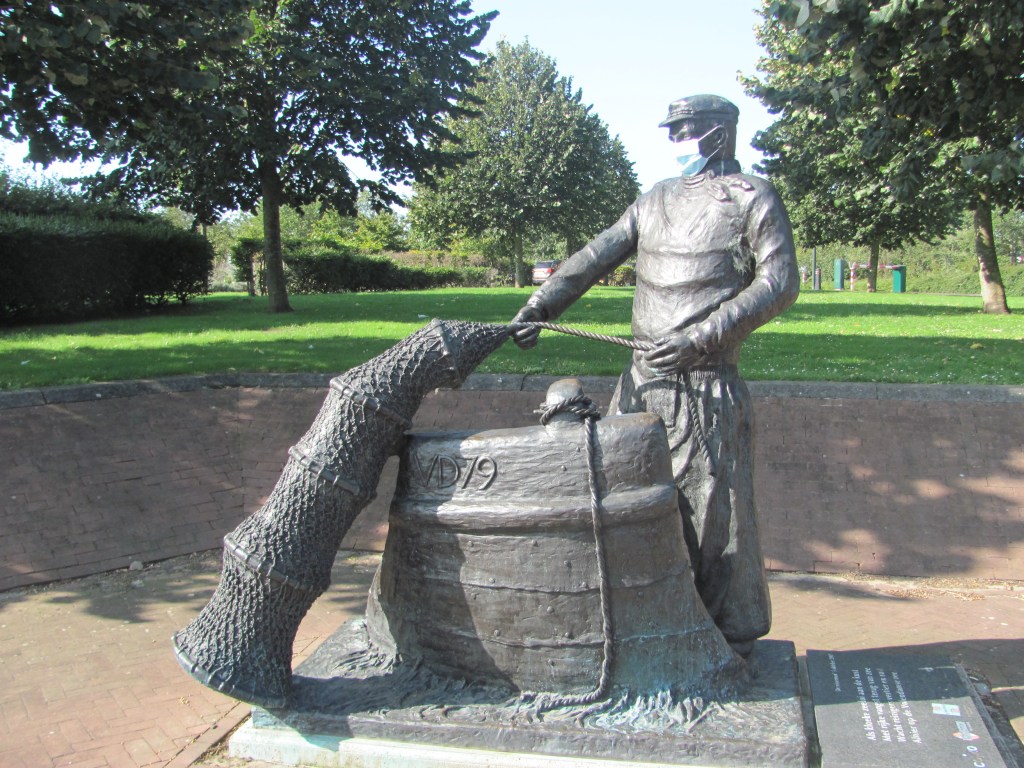
The next day, we wander into the main town about a kilometre away. It is picturesque, and with the good weather it is full of tourists. We grab some sandwiches for lunch and sit in the sun away from the jostling crowds and absorb the atmosphere. In the shop opposite, tourists kitted out in Volendam traditional costumes pose for photographs.

Further on, there is a supermarket where we replenish our food supplies. At least here they have perspex screens.
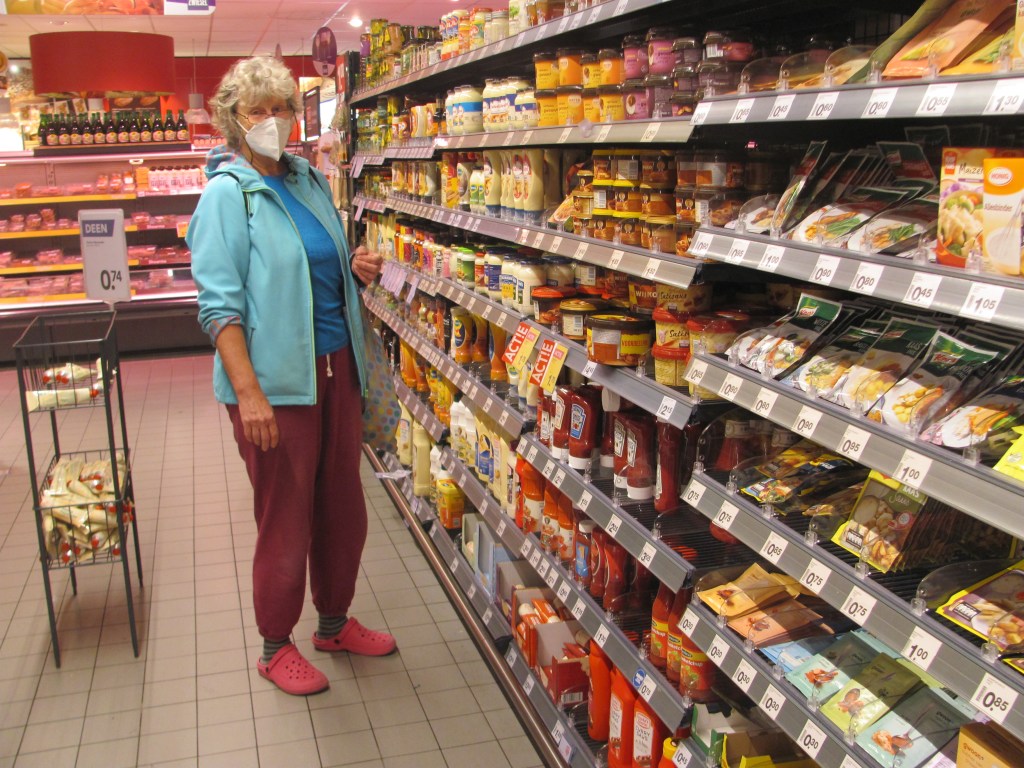
That evening the marina manager tells us that the Dutch government is tightening up on coronavirus measures. From now on it will be mandatory for everyone to wear masks in shops.
“It must be getting serious for the Dutch to say that”, says the First Mate. “Perhaps we ought to think about getting home again before there are any more lockdowns.”
